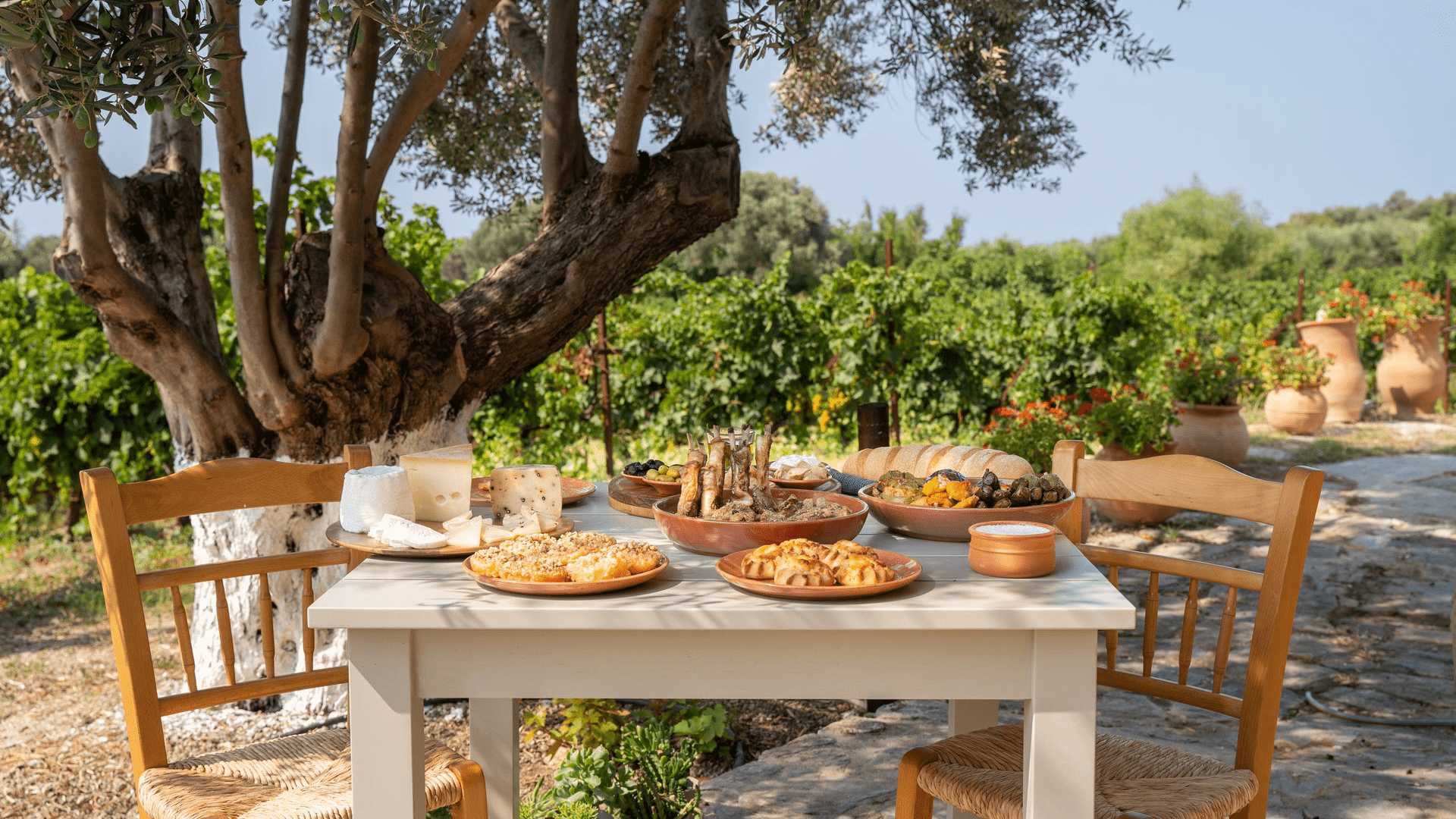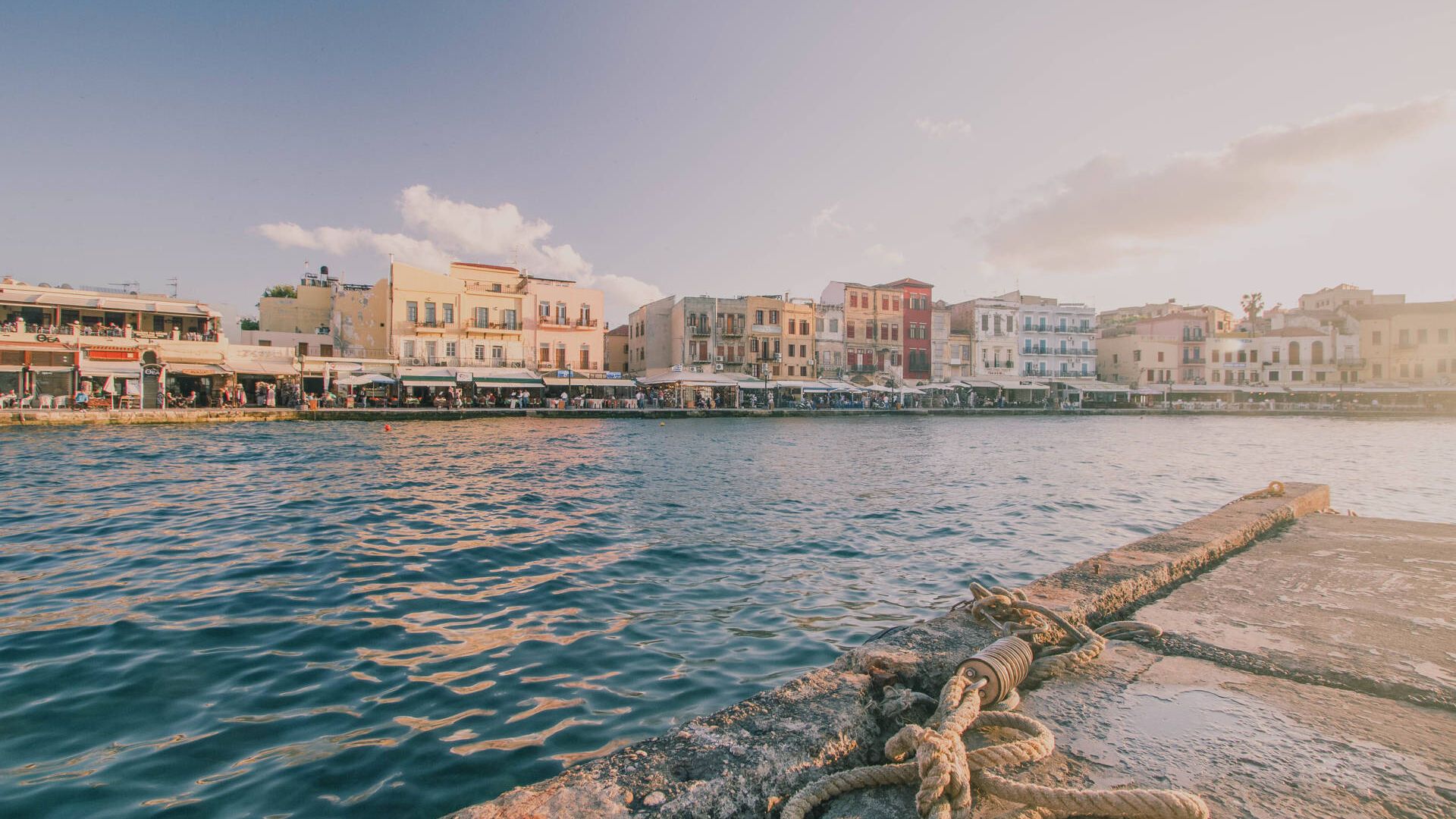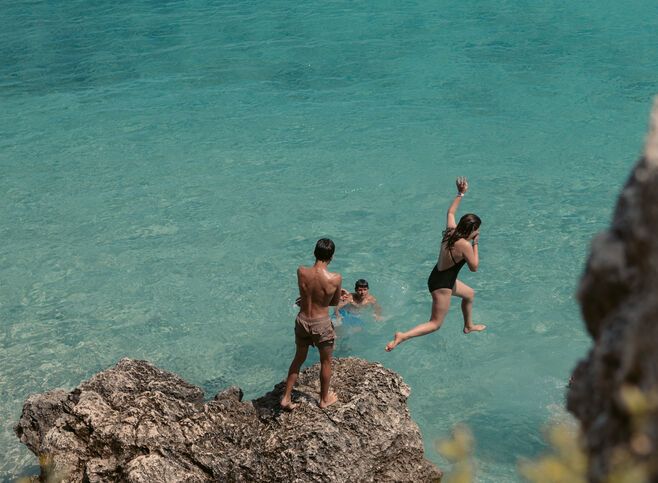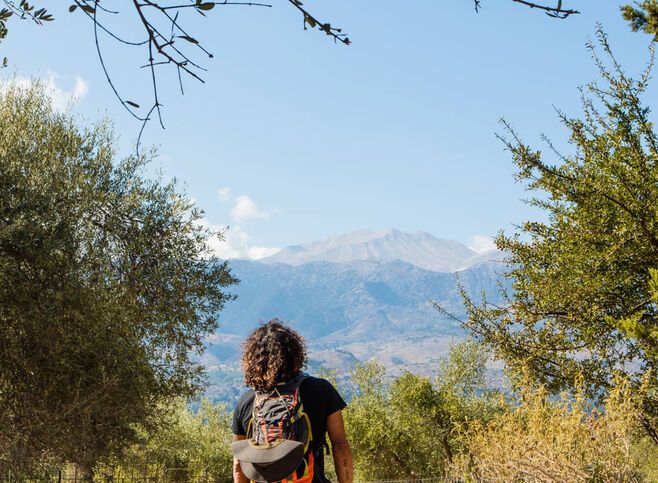Containing 450 species of plant and animal life, the Samaria Gorge is a UNESCO-protected Biosphere Reserve
+21
As Crete’s most celebrated author, Nikos Kazantzakis (of Zorba the Greek fame), once wrote: “The mystery of Crete runs deep. Whoever sets foot on this island senses a mysterious force coursing warmly and beneficently through their veins, sensing their soul beginning to grow.”
Unsurprisingly, this mystical, pure and generous island to the south of the Aegean Sea captures the spirit of Greece and enchants everyone who visits.
Heraklion, Rethymno, Chania, Agios Nikolaos, Elounda, Ierapetra, Malia, Hersonissos, Sitia, Sfakia… wherever you visit, it’s an island of thousands of vibrant images, filled with an open-hearted and vivacious spirit, rich history, world-famous cuisine and hospitable people.
Pictures of heavenly Balos Lagoon in Chania have featured in travel guides and glossies all over the world, as have those of the eternally beautiful Falarsana, one of the finest beaches in the Mediterranean. And as for exotic Elafonisi, on the southwestern tip of Chania … seeing is believing.
Episkopi and Petres have fervent young fans, while noteworthy in the south of Crete are Preveli, Plakias, Ligres, Triopetra and Agios Pavlos, with its huge sand dunes. In Heraklion, the resorts of Malia and Hersonissos attract a young and vibrant international crowd.
Meanwhile, endless kilometres of golden coastline surround Ierapetra, in the Lassithi prefecture to the east. And the celebrated palm forest in Vai is one of the most spectacular sights in Crete, where palm trees embrace the golden sand, while the beaches of Elounda and those around Agios Nikolaos are not to be missed.
Discover 15 of the best beaches in Crete
On Crete, you’ll find some of the most significant attractions in Greece: famous archaeological sites such as the Minoan palaces of Knossos, Phaistos, Malia and Kato Zakros. You’ll also visit important monasteries, some built in the 15th century or even earlier, including the Preveli Monastery in southern Rethymno, the monasteries in southern Heraklion and the historic Arkadi and Toplous monasteries.
You’ll be transported to another time wandering around the castles erected by Venetians and Byzantines. Particularly noteworthy are Kastelli in Chania, the Fortezza in Rethymno, the castle of Heraklion, Frangokastello in southern Chania, the Kazarma Castle in Sitia, and the Monte Forte in Lassithi.
Leave time for the fascinating museums, particularly the Museum of Natural History and the Historical Museum of Crete. In Myrtia, there is also the Nikos Kazantzakis Museum and in Fodele you’ll find the El Greco Museum.
Explore the Archaeological Museum of Heraklion
Cretan hospitality displays the same characteristics as the island’s famous landscape: grand, generous and infinitely welcoming. Families are only too happy to share the island’s many specialities – a dakos salad, free-flowing raki or the experience of the mantinades, poems often accompanied by a Cretan lyre or lute. Wise old men recount memories of Crete's rich, and often troubled, past or tales of the vendettas between feuding families. And there are also stories of the great loves and friendships that characterise a proud and family-orientated people.
Crete is the ideal destination for all kinds of sports and nature activities. For canyoning and hiking, the gorges offer unparalleled beauty. The largest and most famous is Samaria, with its world-renowned Portes (Iron Gates). Other noteworthy canyons are Amba, Tripiti, Kourtaliotiko, Kamaraiko (the longest), Ha (the so-called ‘king of Cretan gorges’), and Ethias and Eligas. You’ll hike across these landscapes of sublime beauty and diversity and, for off-road and 4x4, you’ll zig and zag along Crete’s dirt roads. Meanwhile, the cosmopolitan resorts in both the north and south of the island are ideal for water sports and scuba diving.
You’ll eat to your heart’s content in Crete, whether enjoying gourmet gastronomy or a simple homemade rusk salad with sea salt, extra-virgin olive oil, artichokes and cheese. Discover the secrets of a Cretan diet, considered one of the healthiest in the world.
Some of the many famous products are the local graviera (a piquant cheese), herbs and salad greens such as stamnagathi (a wild chicory), as well as dozens of wild and sweet greens for braising, staka (think clotted cream made from sheep’s milk and used in pilafs) and assorted savoury pies and sweets. Signature dishes are kalitsounia (sweet cheese pastries), savoury cheese pies, egg-lemon lamb with artichoke hearts, fried snails and the famous gamopilafo (wedding pilaf).
In Crete, you’re bound to be offered a glass of tsikoudia (schnapps-like firewater), as locals often make their own. At tavernas, cafes, festivals and fairs, they start drinking it early in the afternoon and it flows until late at night. Be sure to bring a bottle home.
A foodie guide to Crete
Crete is the largest and southernmost island in Greece, located between the Aegean and the Libyan Sea. It has a population of around 630,000. Just above Crete are the Cyclades islands and, to the northeast, the Dodecanese islands.
Crete is divided into four administrative units called prefectures. Chania is in the west, followed by Heraklion, Rethymno and Lassithi. Chania, Heraklion and Rethymno are also the names of the cities in these prefectures. The capital of Lassithi (the easternmost prefecture) is Agios Nikolaos
Crete has three airports. Chania and Heraklion have airports that serve international and domestic flights and there is a third, smaller airport in Sitia (in Lassithi) just for domestic flights. The flight time to Athens is around 55mins and to Thessaloniki is approx. 1hr30mins.
There are numerous ports along the northern coast of Crete with ferry connections to Piraeus and other Greek islands. There are daily ferries from Piraeus (the port of Athens) to Chania, Heraklion and Sitia. There are also ferry connections to many Cyclades and Dodecanese islands. There are more ferry connections in the summer months, including ferries from Rafina to Heraklion, in eastern Attica (around 45mins from the centre of Athens).
There are so many things to do and see in Crete that one trip is never enough. There are landmark beaches (such as Balos, Elafonisi, Preveli and Vai) and some of the most important cultural sites in Europe (particularly the Minoan settlements the old towns of Chania, Heraklion and Rethymno). Crete is also known for its food (it is considered the home of the Mediterranean diet) and slow way of life, particularly in the villages.
As Greece’s most southern island, summer starts earlier in Crete than in other places in Greece. You can comfortably swim from mid-May till the end of October, but every season is special in Crete, with spring and autumn especially popular for outdoor activities. The temperatures can vary by 5-10 degrees from coastal to mountainous regions throughout the year. Crete does get busy in the peak summer months (July and August), so visiting in May-June and September are best.
Crete has an excellent road and bus network, particularly between the cities and main tourism settlements along the north coast. There are roads to all the main holiday spots around the south coast but be aware that Crete is mountainous so some of the roads in the interior can be windy and narrow.





















